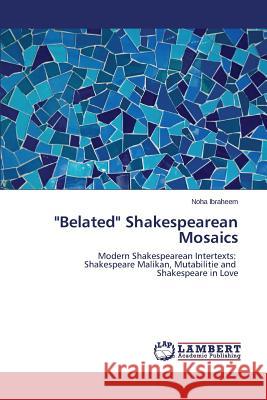Belated Shakespearean Mosaics » książka
Belated Shakespearean Mosaics
ISBN-13: 9783659533402 / Angielski / Miękka / 2014 / 240 str.
William Shakespeare has never ceased to intrigue dramatists from different ages and cultures. Throughout history, many of them attempted to engage with him in dialogues of different kinds. This book examines three "belated" works of art whose writers engage in intertextual relations with canonical Shakespearean works including plays and sonnets. These three Shakespearean mosaics belonging to three different cultures are two plays namely, the Egyptian Shakespeare Malikan (Shakespeare: A King) by Ra'fat Al -Duwayr and the Irish Mutabilitie by Frank McGuinness and one film script, the Anglo-American Shakespeare in Love by Marc Norman and Tom Stoppard. Such examination is done to explore the reasons behind the engagement of each of the four writers in these relations, the various intertextual techniques they use and the "originality" of their texts despite their extensive borrowing from Shakespearean dramatic legacy. Observing a number of critiques and scholarly works, the author noticed the lack of thorough analysis of these three works from an intertextual perspective in relation to Shakespearean works. Such is the gap in Shakespearean scholarship which this book fills."
William Shakespeare has never ceased to intrigue dramatists from different ages and cultures. Throughout history, many of them attempted to engage with him in dialogues of different kinds. This book examines three "belated" works of art whose writers engage in intertextual relations with canonical Shakespearean works including plays and sonnets. These three Shakespearean mosaics belonging to three different cultures are two plays namely, the Egyptian Shakespeare Malikan (Shakespeare: A King) by Rafat Al -Duwayrī and the Irish Mutabilitie by Frank McGuinness and one film script, the Anglo-American Shakespeare in Love by Marc Norman and Tom Stoppard. Such examination is done to explore the reasons behind the engagement of each of the four writers in these relations, the various intertextual techniques they use and the "originality" of their texts despite their extensive borrowing from Shakespearean dramatic legacy. Observing a number of critiques and scholarly works, the author noticed the lack of thorough analysis of these three works from an intertextual perspective in relation to Shakespearean works. Such is the gap in Shakespearean scholarship which this book fills.











